With Parul Das, Janam Maternity Saris and Beyond
JANAM MATERNITY SARIS* (patent pending) and THE TWO-STEP SARI* were invented by Parul Das, a mother of two, wife, attorney and entrepreneur. Parul spent over seven years practicing healthcare and employment litigation with a law firm based in The Woodlands, Texas and currently handles trademark, business and hospitality related matters.
Parul began this journey in late 2013, by taking her first sewing lesson, with the intent of creating a Maternity Sari* that was not only comfortable, but more flattering to a woman’s pregnant figure. Three years later, she has developed at least seven tried and tested Maternity & Nursing Indian garments, as well as The Two-Step Sari*, which takes the pre-stitched sari to a whole new level.
A Q & A with Founder of Janam Maternity, Parul Das and her journey:
What was your ambition growing up – what did you want to do?
I have always loved to build things and solve problems. I may be the only person on Earth that loves building IKEA furniture! Growing up, I loved math and solving equations, but I also loved art – drawing & sketching things that I saw or envisioned.
This is likely why I had a very difficult time declaring my major in college. I attended nearly three years of college before declaring my major. I had already taken enough classes to complete both my minors (Spanish and Business Foundations), but still had declared no major. I was torn between pursuing design and something more mainstream like engineering, medicine or law. I ultimately chose the mainstream path- Economics as my major and attended law school.
My parents sold our childhood home last year because it was flooded during the April storms. It was the third time it had been flooded since we moved into the house in 1981, so it was definitely time to say our goodbyes. We found my art portfolio from high school – thankfully it was upstairs and there were still a few pieces intact.
Images: A few salvaged pieces from Parul’s high school art portfolio including one coloured pencil sketch and a stippling work.

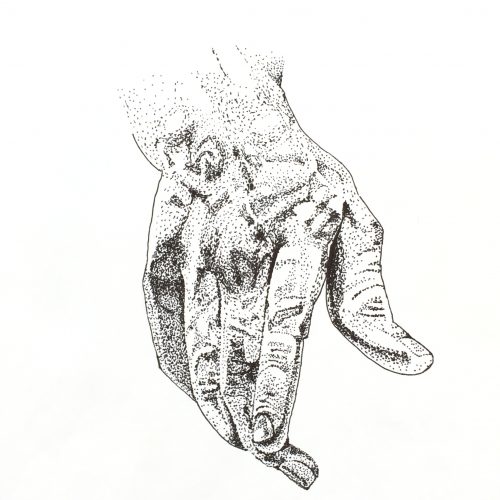
After law school, I was lucky enough to find a job in a small firm, with a great mentor and colleagues that treated me like family (and still do). I practiced healthcare and employment litigation for nearly eight years, briefing and arguing numerous motions, managing written discovery, depositions, mediation, as well as appellate briefs.
How did you come up with the concept of a maternity line for Indian apparel?
The idea for maternity Indian apparel came to me when two of my best friends were pregnant and we were bridesmaids for friends’ wedding. I was helping my former college roommate get ready when it occurred to me that there is really no comfortable or flattering position to tie a petticoat when you are pregnant. I thought to myself “there must be a better way.”
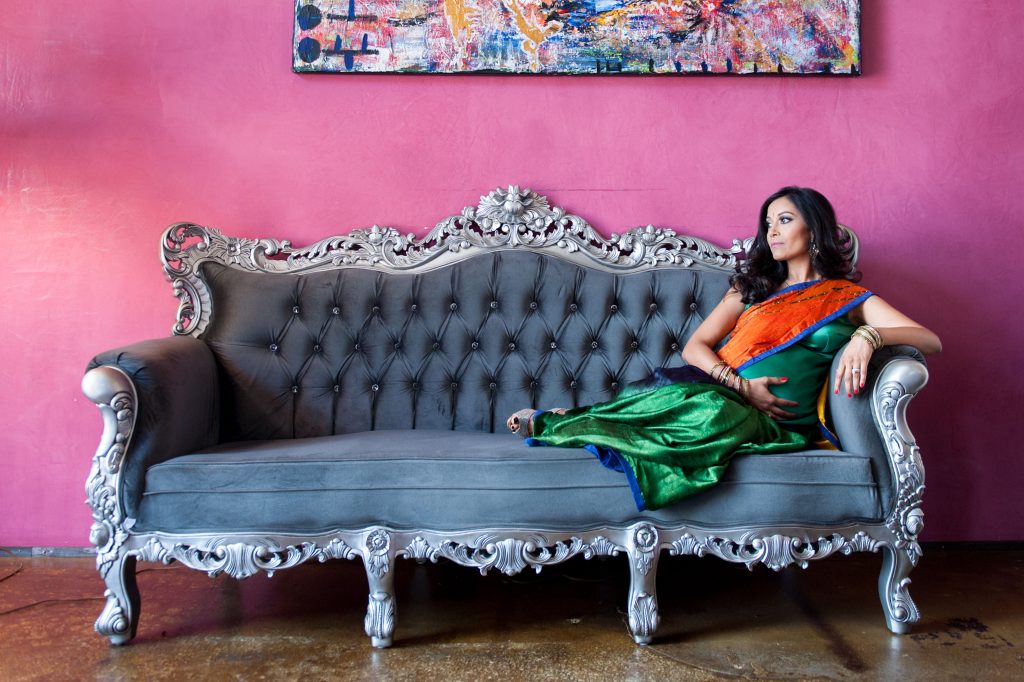
When I became pregnant and had to wear a sari for my Indian baby shower, I was equally uncomfortable. As the idea continued to simmer in my head, I was still practicing law full-time and had searched the Internet a few times to see what was out there that could be worn during pregnancy and/or post-partum for nursing. Other than designers offering to make custom made “maternity” Anarkali gowns, I found nothing.
What made you decide to leave your full-time position as a litigator, with a steady income, to pursue this idea further?
When my son was about 8 months old, I decided to start taking sewing lessons to see if I could learn to make a maternity sari because I still felt that there was a need for this product. I didn’t want to be stuck wearing four Anarkali gowns for each event of a wedding weekend while I was pregnant. I just knew that if I wanted more comfortable and flattering options, other women were probably wanting more options as well.
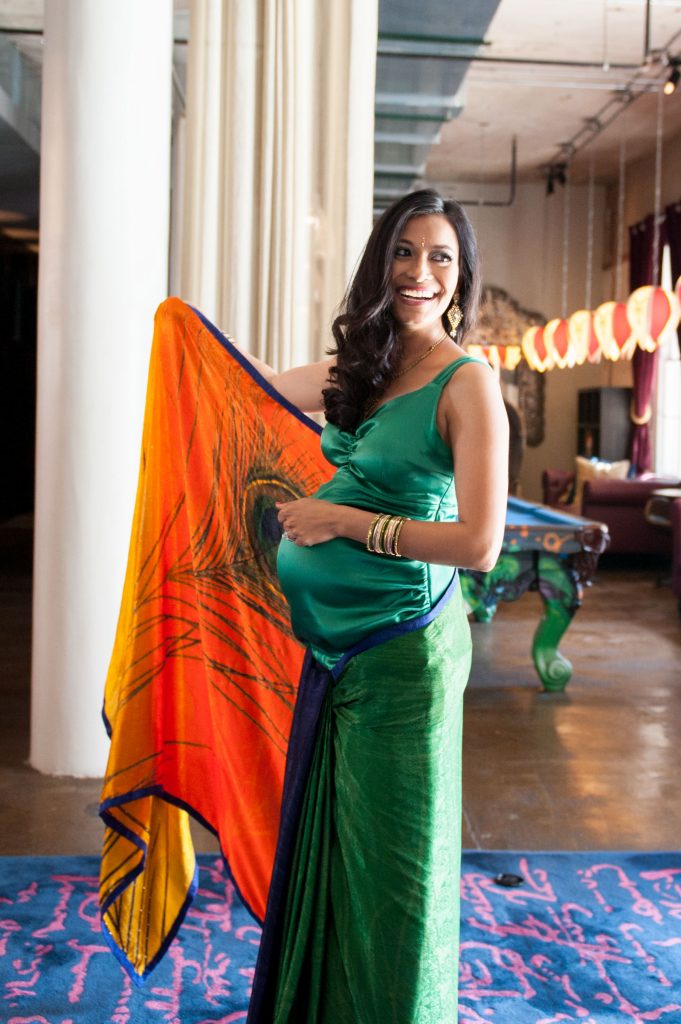
I was still litigating full-time, breastfeeding/pumping for my son, and taking sewing lessons in the extra hours I could squeeze out of the week. After about three months of trying to balance all of it, I was telling my older brothers about my idea and what I was doing and they encouraged me to pursue it further. They both told me that I would be so mad at myself if someone else came out with this idea and it wasn’t as good as my product or in the alternative, if no one ever came up with the idea and I kept wondering what might have been.
I was very fortunate that all of my colleagues were very supportive of my decision and still stay in touch via phone/text and try to see one another when we are in the same city. I also stayed on at the firm for four additional months after my notice to help transition our clients, so everything was on good terms and remains on good terms.
It may seem very odd to most South Asians to hear that my family completely had my back when I made the decision to leave a six-figure steady income to take sewing lessons, but everyone supported me and never once doubted me. I did get the occasional response: “How often do people ask for maternity Indian clothes?,” to which I answered “How many times did you ask for a touch-screen smartphone that could connect you to the Internet, take pictures, and more in 1996?”
I’m not saying I’ve created something as life-changing as the iPhone, but I do hope to leave my mark in the world of South Asian fashion. Though my goal is a little different than others in fashion – the mark I hope to leave is to provide more comfort and ease of wear to an industry that is notorious for clothes that itch, leave marks and are generally difficult to get in and out of.
Did you know from the beginning that you wanted to design a maternity and nursing collection and an easy to wear pre-stitched sari?
Not at all. I started off wanting to create a solution for pregnant women who wanted to wear a sari during their pregnancy. I knew from the start that I wanted to focus on comfort and make the sari more accessible and enticing to pregnant women.
One of my first prototypes was ill-suited for a maternity sari, but I saw potential in the design for an improved, pre-stitched sari. The pre-stitched sari options that are currently on the market are not ideal and needed many improvements. Once I perfected the Maternity Saris* (*patent pending), I shifted my focus to improving on the pre-stitched sari option, leading me to create The Two-Step Sari* (*patent pending).
The nursing sari blouses seemed like a pretty simple leap from the maternity line. It was not. Traditional Western maternity and nursing apparel is made from stretch fabrics such as rayon/spandex, polyester/spandex, and bamboo/spandex. Stretch fabrics cannot be embroidered because the stitching will pop when the fabric expands. I knew I had to make a nursing blouse that looked like a sari blouse but had hidden features that allowed for nursing without being obvious. This would also allow the products to be worn after the consumer was done nursing. In the initial launch, there are three styles that allow for discreet nursing access and all the styles have been tested and our test model moms were able to nurse their babies without removing a single safety pin of their sari.
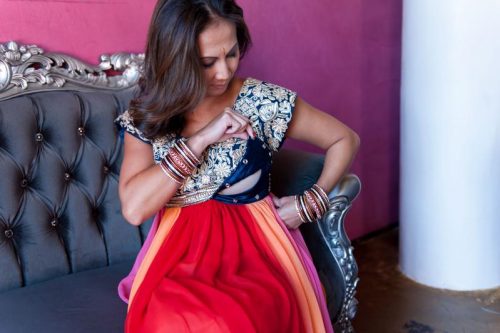

It was with extreme joy that I received those initial testimonials from women who were able to successfully attend events without having to rush off to their hotel rooms to take off their entire outfit to breastfeed their babies and then put their entire outfit back on to go back to the event, repeating the process again as their baby needed feeding and then giving up and just staying in their hotel room.
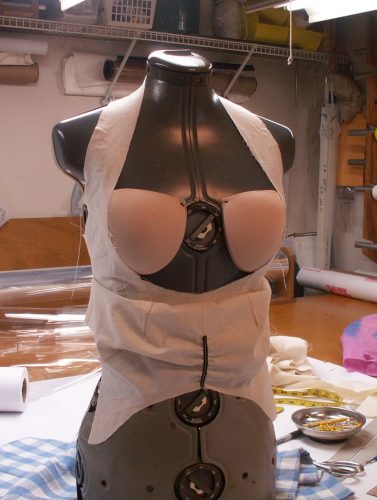
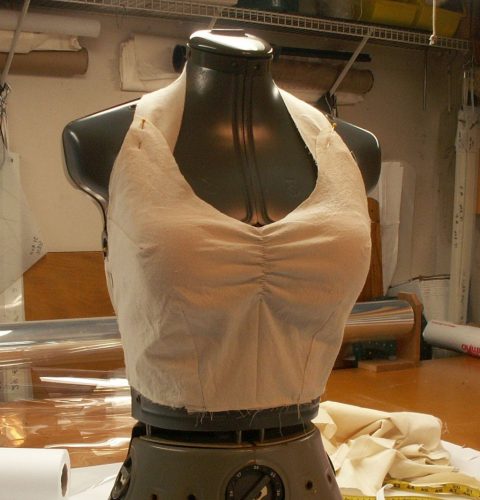
Images: A mock-up of one of the most popular JANAM Nursing Sari Blouses – the Halter Style with snaps at the collar and side to allow for easy snap-down nursing access.
Can you talk about the versatility and use for this type of clothing for South Asian women?
Yes, I’m so glad you asked. Many readers may see my products and think “I can’t possibly spend that much money on something I will only wear during pregnancy.” However, our products are designed to be worn post-partum and are still comfortable. The full-belly panel on the Maternity Sari can be flipped over in half once the baby is born and you can pair it with a choli (short) blouse, or even a nursing sari blouse, and no one will even see the belly band. Plus, it provides a little extra coverage on the tummy area if you aren’t ready to bare the mid-riff after delivery. We are happy to customize fabrics if you want more coverage on a particular product. Our goal is to make sure you are able to wear all of our products again and again.
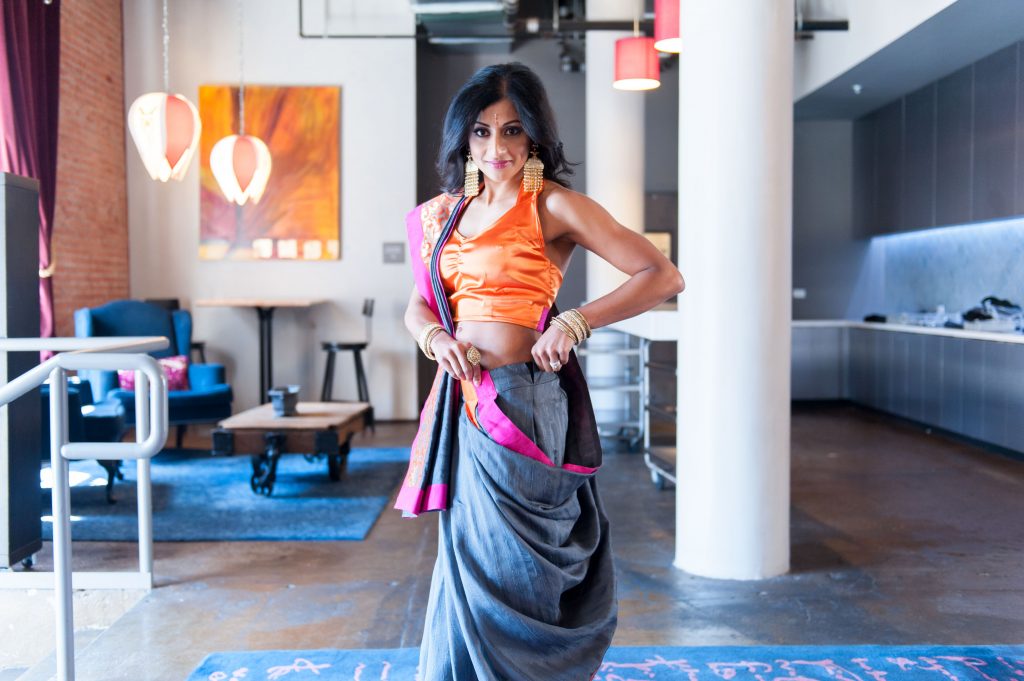
The demi-panel maternity sari is already a hidden stretch panel, so you can certainly wear it post-partum, pairing it with a nursing sari blouse. Our nursing blouses are designed to look just like sari blouses and can be customized to fit your style needs.
Finally, the Two-Step Sari is extremely versatile – it can be worn by teenagers who may not know how to drape a sari without the help of a mom or “aunty”. The Two-Step Sari is a life-saver for mothers with toddlers because of the comfort and mobility it allows without a tight waistband digging into your skin. The Two-Step Sari was even a hit with my mom, who wore one of my first prototypes to a bhajan (prayer where you are sitting on the floor and playing music for a lengthy period of time). She reported back to me that it was so comfortable that it didn’t even feel like she had been wearing a sari all day!
What was the first step you took when you finally decided to leave your job and focus on creating a product that didn’t even exist yet?
I had already started taking sewing lessons while I was working full-time and while breastfeeding/pumping for my son. The moment I gave notice at my firm, things became very real. I knew I had to make a product that was not just functional, but a product that also maintained every essential style element of the traditional sari.
Did manufacturing in India cross your mind?
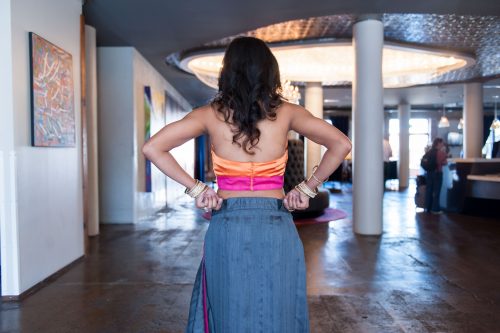 Yes, it most certainly did. I even took a trip to Mumbai while I was pregnant with my daughter to learn more about pricing, fabrics, pattern making, embroidery and meet with tailors. It became very clear to me that with one toddler and another baby on the way, I was not willing to spend months out of the year in India reinventing a wheel that I had no experience with. Many pattern makers and tailors are also working with other designers, so there was no way to maintain the proprietary nature of my patent pending designs. While I understand that it is difficult to obtain and enforce a patent for garments, I also didn’t want to hand it over for someone to copy before I had the opportunity to create my brand and have my products tested in the Western market.
Yes, it most certainly did. I even took a trip to Mumbai while I was pregnant with my daughter to learn more about pricing, fabrics, pattern making, embroidery and meet with tailors. It became very clear to me that with one toddler and another baby on the way, I was not willing to spend months out of the year in India reinventing a wheel that I had no experience with. Many pattern makers and tailors are also working with other designers, so there was no way to maintain the proprietary nature of my patent pending designs. While I understand that it is difficult to obtain and enforce a patent for garments, I also didn’t want to hand it over for someone to copy before I had the opportunity to create my brand and have my products tested in the Western market.
Also, it may have just been the few people that I met with in India, but I was left with the impression that resident Indians wear saris once or twice a year to very formal events, and they have sari drapers that come to drape their saris. It became apparent that the resident Indians are more interested in Western apparel. On the other hand, everyone I approached in the United States was extremely enthusiastic about the idea and once pregnant women started testing and wearing my prototypes, I was motivated to continue. We (non-resident South Asians) are much more interested in wearing South Asian apparel when we are attending cultural events.
Most people would have left India feeling dejected. What made you continue on your path, without a method to manufacture your innovative creation?
My main reason for going to India was to see if I could meet with and/or collaborate with a designer that had access to fabric, pattern makers, cutting/sewing, tailors, embroidery craftspeople, etc. without having to start from scratch. I was naïve to think that it would be as easy as submitting my prototypes and then having saris and blouses made in colors styles, and patterns that I would then sell. Finding a designer that is willing to give up the design element is difficult and I am extremely picky and detail oriented, so I learned very quickly that it would not be an option.
It was a mistake, but I did learn from it. I also learned that it is just as expensive to make garments in India as it is to make them in the United States. The advantage of making garments in India is access to all the fabrics and craftspeople, which cannot be duplicated in the United States.
As much as I was naïve, I am also extremely stubborn. I set my focus on perfecting my product line. I made two maternity saris and two maternity sari blouses and tested them myself at a wedding. I knew that if I could wear the saris easily and comfortably while I was pregnant with my daughter, I had something worth pursuing. I was pleasantly surprised that it was so flattering to the figure that people were asking me when we were going to “start trying for number 2?” Not only was it comfortable, easy and fast to wear, but it made me look like I wasn’t pregnant (or at least not as pregnant as I really was). As I saw it, this was a win-win-win (to quote DJ Khaled).
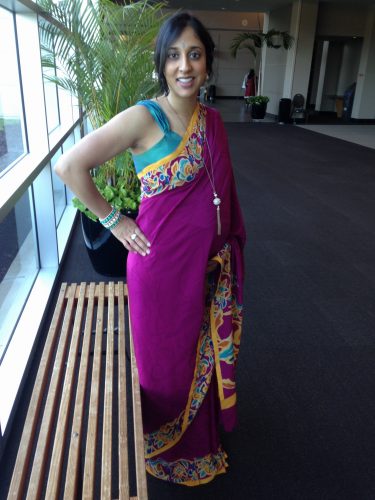
Parul wearing one of her first maternity sari prototypes, a Satya Paul sari that she converted to a full-belly panel maternity sari, paired with a full-length maternity sari blouse.
Tell me a bit about your litigation experience and how that prepared you to start your own business?
Most attorneys have the inherent skill of organization. The majority of attorneys I know are Type A personalities (or have Type A legal assistants and paralegals to keep us in check). Due to the nature of a high-volume litigation practice, I was accustomed to being managed by our color-coded calendars, abiding by checklists, and managing multiple clients and employees. My colleagues would always joke about all the stacks of paper on my messy desk, but would stare at me in amazement when I was able to pull out the exact document we were looking for at any given time. I have a system.
I’m no different now. It drives my husband nuts, but my desk in our home office is usually very cluttered because I’ve got my legal workload to manage, the kids’ art/paper/documents, and on top of all that, sketches, files, etc. for JANAM MATERNITY and THE TWO-STEP SARI.
How do your former attorney colleagues react when they find out you are now a fashion designer?
I don’t consider myself a fashion designer. Designers have gone through proper training including drawing, design, sewing, construction, marketing, merchandising. It would be offensive to claim the title “designer” without earning it. All I’ve done is take a few sewing lessons, make some prototypes and draw out some sketches to assist an experienced seamstress with making my initial prototypes even better.
I still just consider myself an attorney that likes to solve problems. My former attorney colleagues have been extremely supportive and enthusiastic about JANAM MATERNITY and THE TWO-STEP SARI. Many of them have been to South Asian weddings and have experienced the desire to participate and wear traditional South Asian attire, but too intimidated to try the sari. Many of them reacted with a “Where were you 3 years ago??!!??” when they found out about my products.
I’ve also had the good fortune of being able to collaborate with a true designer, Rohini Bedi, who is manufacturing my products. Our first round of retail products (expected to launch by the end of August) are designed by her, but she has been extremely gracious in taking my style preferences into account for the next round that we will offer.
What does the name ‘JANAM’ mean?
JANAM means “birth” or “creation” in Hindi, with roots in Sankrit (“janma”). It is the perfect word to describe both the consumer and the product. The products are a creation to make the consumer’s path to the birth of their child more comfortable and stylish, and for our post-partum consumers to be able to nurse their children in a comfortable and stylish manner.

There must have been a number of names you had to choose from – how did you decide on THE TWO-STEP SARI?
You are right. There are a number of names I could have chosen for this sari, but once I heard myself say “THE TWO-STEP SARI” aloud, I knew it was the clear winner.
The Texas Two-Step is a country-western dance that is extremely popular and being born and raised in Texas, I grew up listening to country music. I knew I wanted something about my Texan roots for this product and it perfectly describes the sari as well. It takes Two Steps to put it on: pull it on like a skirt and pin it to your blouse at the shoulder!
What is one vital piece of advice you would give someone who wants to launch their product?
Be prepared to fail, but be more prepared to get back up and find more creative solutions. Know when to walk away from a time-sucking, money-sucking business model. I made a lot of mistakes along the way. I went from wanting to manufacture the garments abroad, to thinking I could license the idea to designers, and back to working with one designer to manufacture the garments abroad.
I’m not even 100% sure that this will be my ultimate business model, but for now, I want to learn as much as I can from it and make it better as I learn from my consumers. That is why survey feedback is so important. I know it can be annoying and take precious minutes of your time, but it really can help us create a better product and buying experience when we receive customer preference information and feedback. What is obvious to you is not always obvious to us as the business owners.
What are some of the sacrifices you’ve had to make to get your product launched?
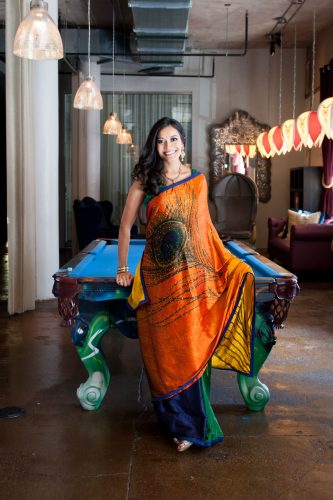 Starting a business is a lonely journey. If you are an extrovert, you likely won’t have any problem marketing and selling your product, but it is a long, lonely journey to create a product that doesn’t exist. Also, leaving a steady six-figure salary with benefits to take sewing lessons and putting money into a new business, applying for patents, making prototypes, etc. requires making financial sacrifices. I didn’t shop for “fun clothes, shoes, accessories” for two to three years. Although I started practicing law again within six months of leaving my law firm, it was as a solo practitioner. I am currently practicing law and working on business organization, growth and expansion, and trademark issues related to my older brother’s hospitality brand.
Starting a business is a lonely journey. If you are an extrovert, you likely won’t have any problem marketing and selling your product, but it is a long, lonely journey to create a product that doesn’t exist. Also, leaving a steady six-figure salary with benefits to take sewing lessons and putting money into a new business, applying for patents, making prototypes, etc. requires making financial sacrifices. I didn’t shop for “fun clothes, shoes, accessories” for two to three years. Although I started practicing law again within six months of leaving my law firm, it was as a solo practitioner. I am currently practicing law and working on business organization, growth and expansion, and trademark issues related to my older brother’s hospitality brand.
While this provides me with the flexibility of working from home, I also have the additional tasks of making sure laundry is done, the dishwasher is loaded & emptied, making dinner, while getting my work done during the day and after our kiddos are in bed. Grocery shopping on the weekdays is a huge plus, though!
You really do live, sleep (sometimes not so much), and breathe the business and I have been extremely blessed to have a family and friend circle that not only understands my hectic schedule, but also reaches out to help whenever they can. I make an extra effort to make sure my children’s sacrifices are minimal. Our time together as a family is quality time and I really try to keep phones and screens away as much as possible.
What is your vision for the future of JANAM MATERNITY* and THE TWO-STEP SARI?
I would love to see retailers carrying both of my JANAM MATERNITY and TWO-STEP SARI brands in boutiques across the world. I’ve taken the time to have each prototype tested by all types of women (not pregnant, pregnant, nursing, not nursing, mothers, grandmothers, etc.) at cultural events to ensure that the products are functional, comfortable and easy to use, without sacrificing style. I want to revive the sari as an option for all ages of women and make sure I do my part to preserve what I feel is the most beautiful, elegant garment South Asia has produced.


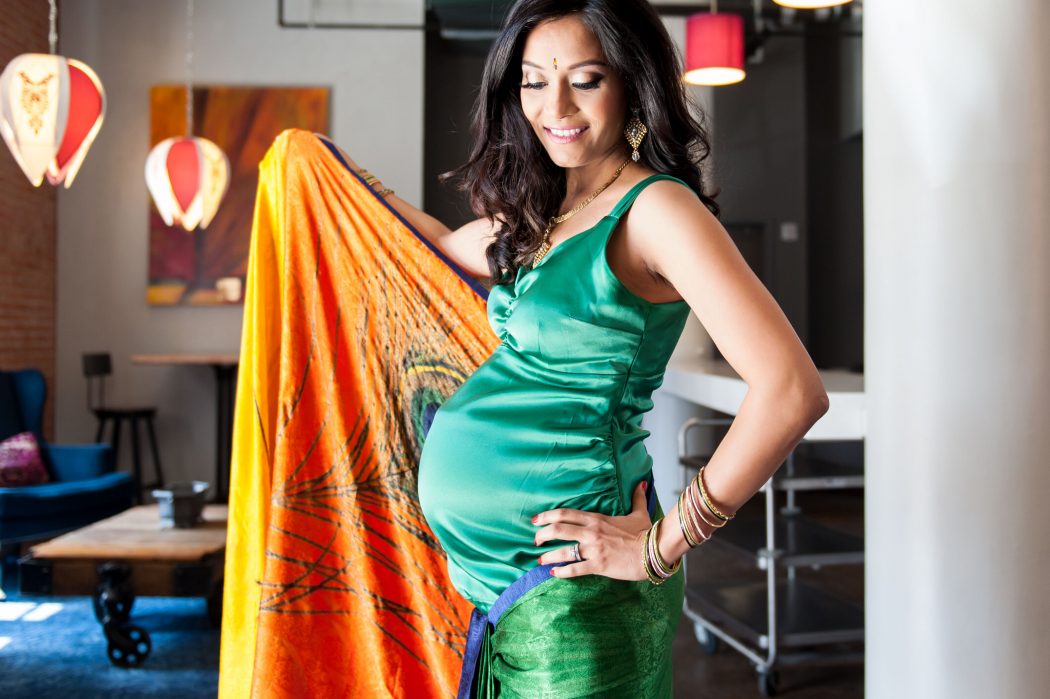
There are no comments
Add yours